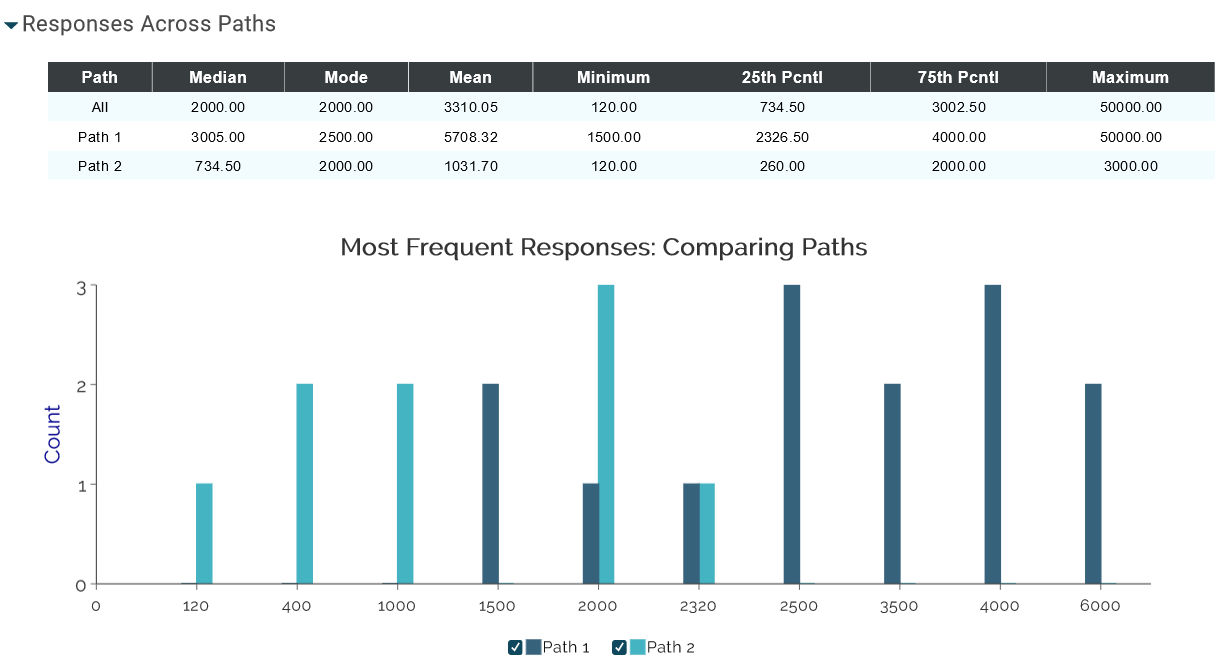How biased are you?
Use MobLab’s survey and pathing feature to expose the phenomenon of Anchoring in a brief in-class experiment. In his bestselling book, Thinking Fast and Slow (2011), Daniel Kahneman popularized the distinction between two modes of thought that guide our everyday actions and decisions: System I (thinking fast) is often instinctive and emotional whereas System II (thinking slow) is more considerate and characterized by logic and objectivity. As System I often relies on heuristics and rules of thumb, it requires less cognitive effort but may sometimes lead us astray. One such heuristic is “anchoring and adjustment.” Often, when making a numerical assessment, one starts with an initial value (the anchor) and adjusts in the correct direction. If the adjustment is insufficient, then the ultimate assessment will be biased towards the initial anchor. In MobLab’s in-class experiment this anchoring bias is exposed using a simple example.MobLab’s Anchoring Bias Survey
The experiment is composed of two questions: The first question sets the so-called Anchor to bias participants for the second question, which is a simple estimation task. While completing the survey, your students are randomly split into two equally sized groups and confronted with different Anchoring Questions. Students in group 1 are asked whether the Mississippi River is longer than 200 miles and students in group 2 are asked if the Mississippi River is longer than 3000 miles. In the second question students of both groups are asked to estimate the length of the Mississippi and enter it as a numeric value.You can either run this survey in-class and immediately access the results or schedule it as a take-home assignment and present the results in the next lecture. Below are the answers to question 2 from 38 students in an MBA Pricing class broken down by groups. Even without any fancy statistical analysis, it is evident that the estimates of students from group 1 (light green) were systematically lower than the estimates of group 2 (dark green).
 P.S. According to Wikipedia, the true length of the Mississippi is 2,320 miles. Don't worry if you are not teaching at a North American school. You can easily update the name to a local river in your region or customize the question to your preference.
P.S. According to Wikipedia, the true length of the Mississippi is 2,320 miles. Don't worry if you are not teaching at a North American school. You can easily update the name to a local river in your region or customize the question to your preference. At this point you can spark a discussion about where anchoring biases occurs in other everyday situations and how this phenomenon is considered in the business world for strategic decisions in management and marketing. Steve Jobs introducing the iPad is a famous anchoring bias example that shows how companies may take advantage of this phenomenon when pricing new products.
How to get started:
If you already have a MobLab account, you can explore all of our games in our game library. If you don’t have an account, create one. It’s commitment-free and gives you access to all MobLab materials. Here is the link to sign up or if you prefer to meet one-on-one first for a personalized tour of the MobLab economics games platform, schedule a time convenient for you here.Happy playing!

